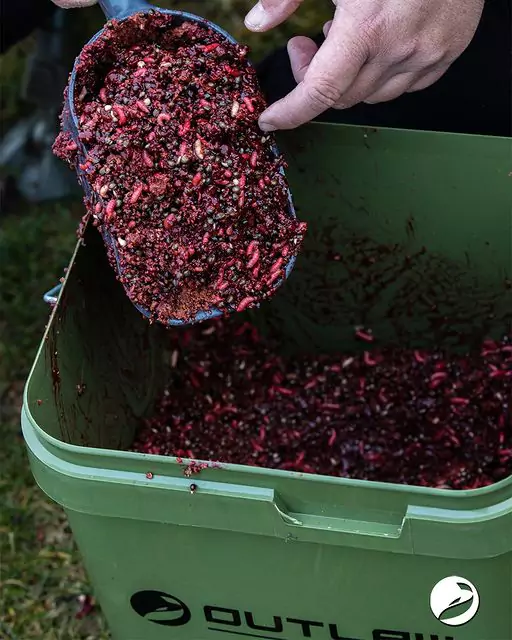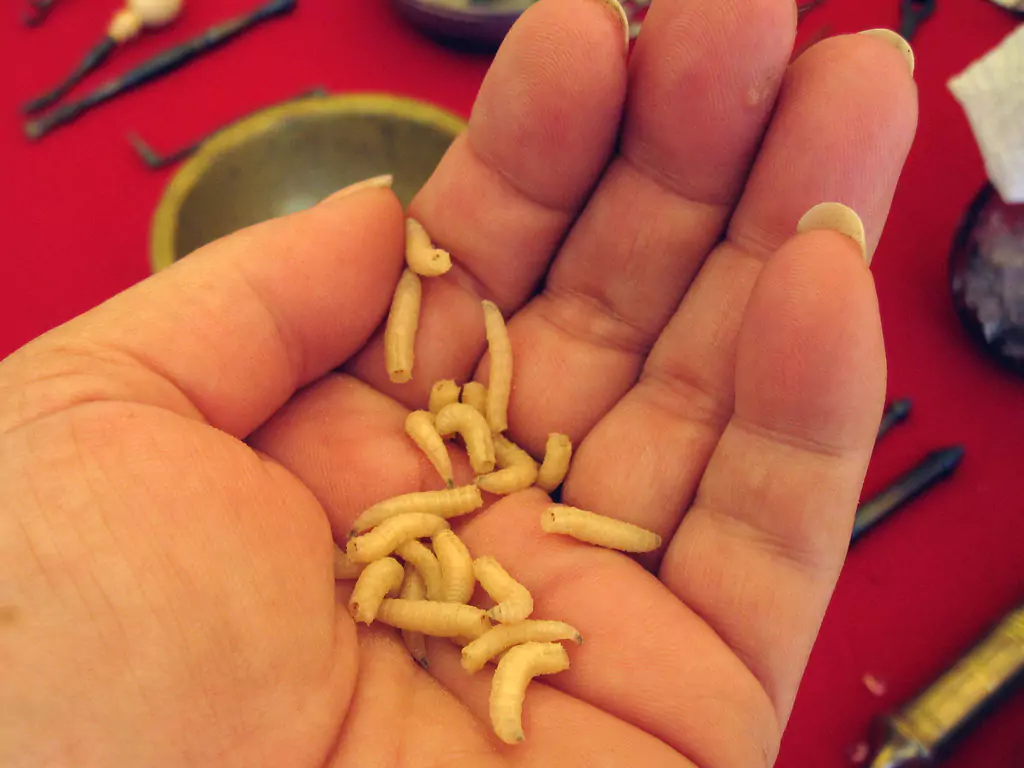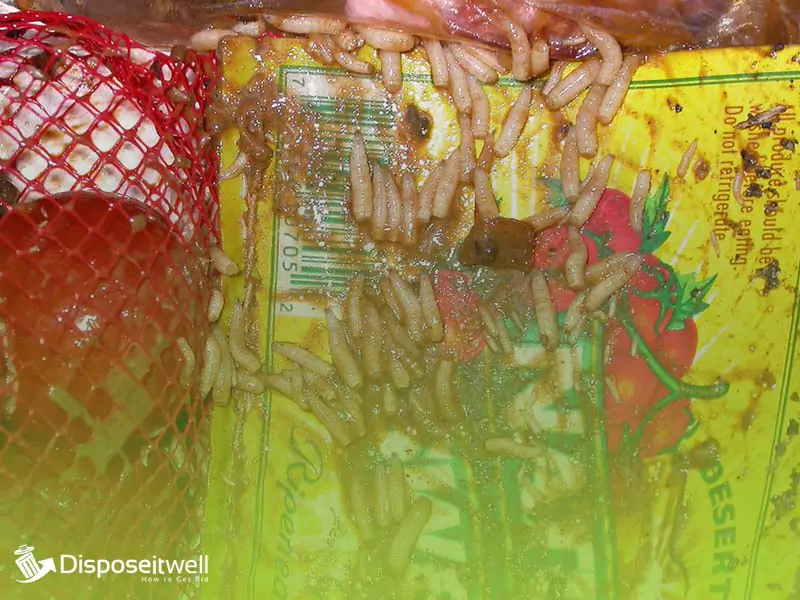If you’re a homeowner and have recently been dealing with maggots in your trash cans, then you know how annoying this can be. Maggots are fly larvae that feed on organic matter, such as food scraps, making them an especially unpleasant sight around the house.
Regularly cleaning the bins, using pest control sprays, installing tight-fitting lids, freezing food waste before disposing of it, and organizing your garbage area properly can prevent these pesky insects from taking over.
Maggots are not only a nuisance but can also be dangerous to our health, so keeping them away is essential for a hygienic environment. This article highlights the measures to take to keep maggots at bay.
How Do Maggots Sneak Inside My House?
Larvae are commonly associated with rotting food and animal carcasses. These pesky creatures enter through open windows or doorways that provide access from outside areas where food waste and animals may lie dormant.
Once inside, maggots can quickly spread throughout the house as they hatch and breed more larvae. They also travel on clothing items such as shoes or socks. If one steps on any organic matter near garbage cans outside, they could unknowingly bring maggots indoors by walking around without changing those clothes.
Another common entry point for maggots is cracking between doors or windowsills where air flow becomes unbalanced.
This irregularity creates localized warm spots that attract insects looking for warmth during colder temperatures.
Some homeowners who use mulch material near their homes create sheltering sites fleas lay eggs that eventually hatch into adult flies capable of entering the home themselves after hatching from egg form outside.
Why Do Flies Lay Eggs in my Trash Bag?

Flies lay eggs in trash bags if there’s something inside attracting them. This could be food scraps, leftovers, or even pet waste.
They lay their eggs near these sources of nourishment because they provide sustenance for their larvae (maggots) when they hatch.
Also, flies may lay eggs in your trash bag because it provides shelter from predators and harsh weather conditions while having easy access to food sources when the larvae emerge.
Can Fruit Flies Eat Through a Plastic Bag?
Although fruit flies are known for their ability to consume organic matter, such as fruits and vegetables, they cannot digest any plastic material.
This means that when fruit flies come in contact with a plastic bag, they will be unable to feed on it and, therefore, won’t damage the material’s surface.
However, they can lay eggs inside the crevices and folds of a thin plastic bag which could eventually hatch into larvae.
How Do I Keep Maggots Away From My Trash Can?
Maggots are an unsightly nuisance, and they pose a health hazard. If you’ve noticed signs of maggots in or around your trash cans, take action and keep them away for good.
Here are ways to prevent and control maggot infestation in your home’s trash cans or other storage containers.
Keep Your Trash Cans Clean
Regularly wash out the inside and outside of all trash cans with hot soapy water to remove any food residue that may attract flies or other pests.
Rinse them thoroughly after washing them before disposing of the wastewater in a safe area away from your home.
Use An Airtight Lid
Always use a lid on all trash containers. This will keep flies, insects, and other creatures out of the container and reduce the chances of maggot infestations. It is also important to empty these lids regularly.
Invest In Traps
Insect traps designed for controlling fly populations can be placed around garbage receptacles indoors and outdoors. These traps should be checked often so they don’t become overfilled, which could lead to further problems if left unattended for too long.
Place baking soda or activated charcoal at the bottom of each bin.
These materials absorb bad smells and help maintain neutral odor levels over time. Just sprinkle some onto the bottom before filling it with new waste. Depending on how much waste is collected, you may need to replace it after several uses.
Seal Cracks & Crevices
Maggots love dark nooks and crannies where they can hide while reproducing. Ensure any cracks or crevices around windowsills, door frames, and near your trashcan are properly sealed up with caulking material.
This will ensure no new larvae have access to your home from outside sources.
Call For Professional Help
Trying to eliminate large larvae within one’s home can feel overwhelming. Contact professional pest control services specializing in removing unwanted insect populations like maggots.

FAQs
How do maggots get into a sealed bag?
It’s possible that something could have contaminated the plastic before it was sealed or that some opening already existed, allowing the insects access.
However, in many cases, maggots and other pests can gain entrance by “hitchhiking”. This is when an unsuspecting person carries them inside on their clothes or belongings.
Additionally, adult flies can sometimes find tiny gaps and lay eggs which will eventually hatch into larvae (maggots).
Inspect all bags carefully before sealing them up to prevent maggot infestations from occurring in food storage bags or containers.
This includes checking for any small holes or tears that might allow pests inside and proper cleaning and drying, so nothing foreign gets trapped between layers of material.
Also, avoid storing items near garbage cans or compost heaps since these are breeding grounds for flies.
What happens if a maggot touches your skin?
Depending on an individual’s sensitivity, maggot exposure through direct skin contact can cause various reactions.
For those with no allergies or sensitivities towards insects such as flies or mosquitoes, coming into contact with a maggot should not result in an adverse reaction.
However, individuals who experience irritation from other biting insects could find that similar problems occur when near certain types of larvae. Generally, most people will feel a tingling sensation, but no further damage will follow.
What kills maggots instantly?
The most common way to kill maggots instantly is by applying heat. Hot temperatures over 140 degrees Fahrenheit can cause serious damage and even death to several bugs, including maggots.
You can pour boiling water directly on top of the affected area regularly to eliminate any existing larvae or eggs without having long-term residual effects surrounding your living space.
Conclusion
The idea of maggots being able to break through plastic bags may sound far-fetched, but it is more common than one might think. Maggots can chew through plastic and compromise its integrity surprisingly quickly.
While various ways can help deter them from becoming a nuisance in your home or elsewhere, it’s still important to be aware of this potential issue and take appropriate precautions when disposing of food containers and other items made with plastic.
By following simple tips such as keeping foods securely sealed away from open-air sources, ensuring all containers are properly stored away after use, and regularly cleaning out trash cans, you should be able to keep any potential infestations under control.

Gemma Alexander has an M.S. in urban horticulture and a backyard filled with native plants. After working in a genetics laboratory and at a landfill, she now writes about the environment and recycling topics.

